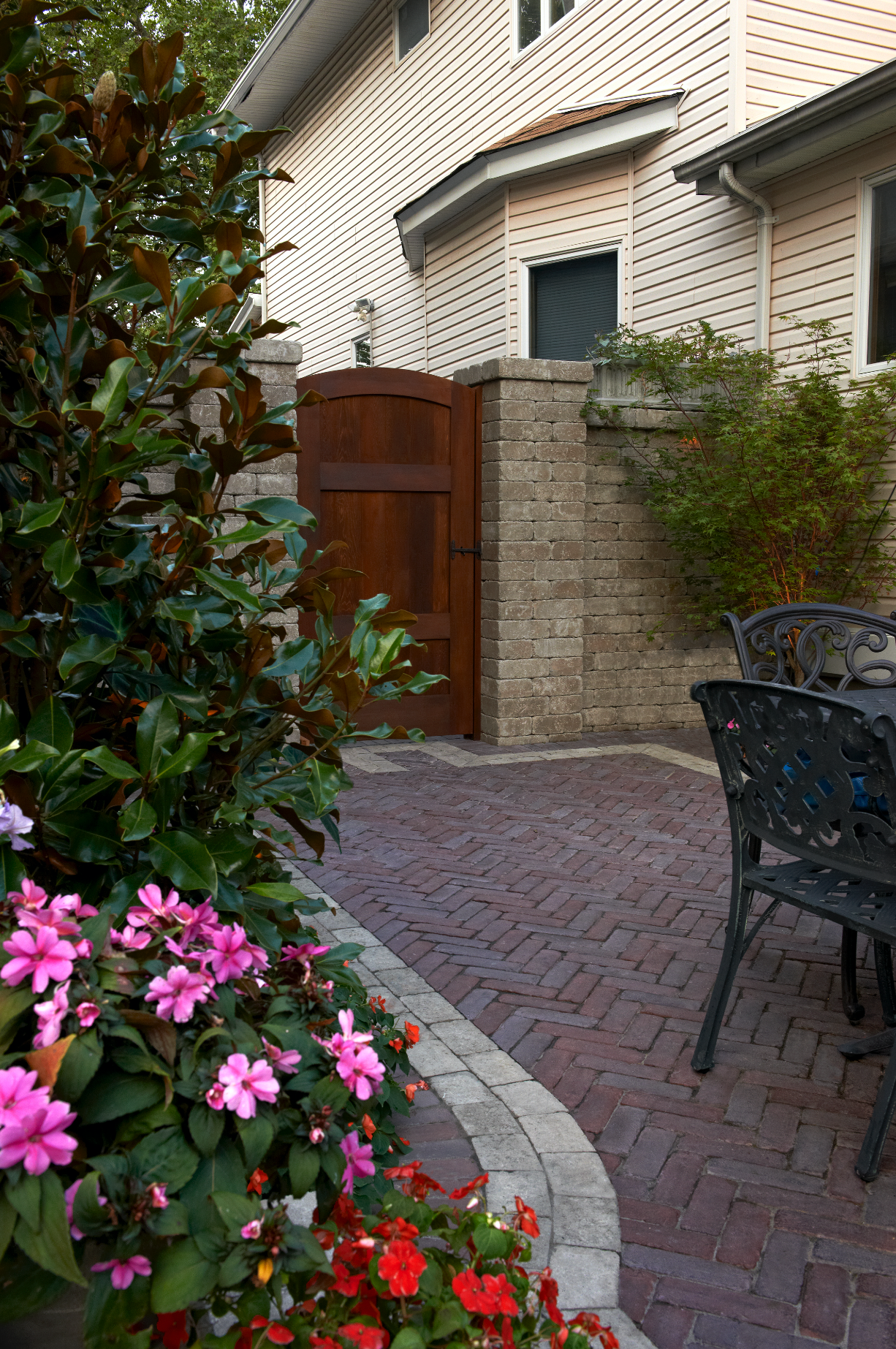The walkway is an important element of any Long Island, NY landscape, and yet it is often overlooked. Walkways are both functional and aesthetic. They allow you to walk through your landscaped areas at any time of the year without getting your shoes wet or dirty, and at the same time, this is the one landscape architectural element that draws the eye to certain focal points of the outdoor landscape while simultaneously providing its own attractive qualities.
Accessibility and Flow
Too often, homeowners get too caught up in creating their perfect hardscaped or softscaped spaces without thinking about how these areas connect or relate to each other. Walkways can be used to tie areas of a landscape together and provide fluid accessibility. When ignored, a landscape can seem disconnected and disjointed. In the case of connecting functional areas, the accessibility created by walkways is crucial to the efficient use of these spaces. Outdoor kitchens, for example, require easy access to the indoors, as well as outdoor dining and entertainment areas for convenience and efficiency.
RELATED: THE IMPORTANCE OF STRUCTURE AND SEPARATION IN LANDSCAPE DESIGN
The Pathway Creates a Mood
Walkways also set the mood for your outdoor area in a number of ways. This is done through design, style, color and texture, as in other architectural landscape elements. The difference being that direct interaction with a walkway is inevitable. Consider, for example, the difference between walking through a landscape along a walkway that curves and twists along the natural contours or features of a landscape and one that cuts a direct and efficient path. Or between strolling along a walkway that runs along the top of a slope that gives way to a magnificent view or one that winds through thick vegetation. These styles offer tranquility, functionality, openness and a sense of mystery, respectively.
RELATED: DESIGN IDEAS FOR INCORPORATING SWEEPING CURVES AND MEANDERING LINES INTO YOUR LANDSCAPE
The Difference in Path Styles
As a general rule of thumb, a formal landscape depends on straight paths with right angles. This straight path design denotes classic and traditional beauty. On the other hand, a curving and meandering path denotes a casual, relaxed atmosphere and natural beauty, and often contributes to a rustic or natural theme.
Different Widths
The width of the path you select for a landscaped area depends on style, but it is also dependent on the amount of traffic the area receives and the frequency with which it is used. This decision will also, to a degree, influence the materials you choose for the paths.
Design and Location
Where the landscaped area is located will also influence the type of path and the materials used. For example, a front yard walkway will require special curb appeal that shows off the entrance and structure of the building, while backyard walkways will need to unify all landscape architectural elements, and both areas will also need to address safety issues (such as preventing slipping in inclement weather.)
As you consider different materials, plan out the placement of the walkways. To do this think about whether you wish to:
Create destination zones.
Offer a natural traffic flow.
Draw traffic from one area of the landscape to another.
Make a more sustainable landscape area where a combination of walkways and patios may be a better alternative to the more labor intensive lawn.
Create intimate areas within the landscaped area where visitors might want to linger; for instance, a shady nook with lounge chairs where visitors can sit and talk or read.


